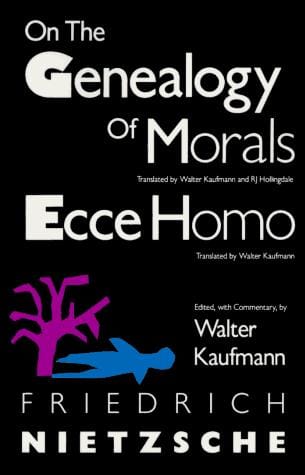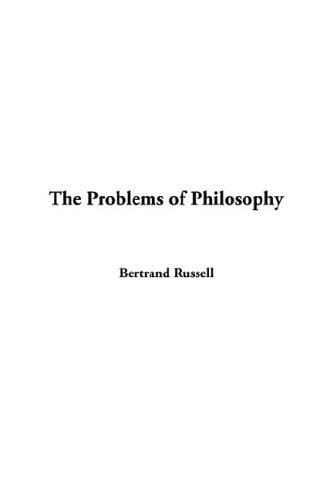Understanding Nietzsche: On the Genealogy of Morals and Ecce Homo
Explore Nietzsche's On the Genealogy of Morals and Ecce Homo, their themes, context, and modern relevance in an accessible guide.

Introduction
Few philosophical texts provoke as much fascination and controversy as Friedrich Nietzsche’s "On the Genealogy of Morals" (1887) and "Ecce Homo" (written 1888, published 1908). The former dissects the origins of moral values, while the latter serves as Nietzsche’s intellectual autobiography and triumphant self-assessment. Together they form a complementary pair: one turns a critical lens on Western ethics; the other explains the motive force behind that critique. This article offers an accessible, 800-word overview of both books, unpacking their context, major arguments, and ongoing relevance.
Historical Context
By the late nineteenth century, European culture was wrestling with rapid scientific progress, fading religious authority, and political upheaval. Nietzsche, a philologist by training, believed that inherited moral codes no longer served life in this new landscape. "On the Genealogy of Morals" appeared two years after "Thus Spoke Zarathustra" and sharpened attacks he had already leveled against Christianity. One year later he penned "Ecce Homo" in a manic burst of creativity just before his mental collapse in January 1889. Reading the two works side by side reveals a thinker racing against time to cement his legacy.
Key Themes in On the Genealogy of Morals
Master and Slave Morality
Nietzsche argues that morality did not descend from heaven fully formed; it evolved from power relations. In ancient warrior societies, the noble class labeled their own traits—strength, vitality, pride—as “good,” while viewing weakness as “bad.” Christianity later reversed this valuation through what Nietzsche calls "slave morality." Powerless groups rebranded humility, obedience, and pity as virtues, casting noble virtues as sins. Genealogy thus reveals that what we praise today emerged from resentment rather than universal truth. This shocking claim aims to unsettle complacent moral certainties.
Ascetic Ideals and Ressentiment
The third essay of "Genealogy" explores why people cling to self-denial. Nietzsche sees the ascetic ideal as a psychological strategy: when the weak cannot express strength outwardly, they turn aggression inward, cultivating guilt and self-punishment. Priests, philosophers, and even scientists exploit this tendency, promising meaning through suffering. Ressentiment—a simmering, impotent hatred—fuels the process. By exposing these subterranean motives, Nietzsche hopes to spark a transvaluation of values, urging readers to craft ethics grounded in life-affirming instincts rather than life-negating ressentiment.
Key Themes in Ecce Homo
Nietzsche on Self-Fashioning
The subtitle of "Ecce Homo"—"How One Becomes What One Is"—signals its central concern: the creation of the self. Nietzsche dismisses the idea of a fixed, given identity. Instead, he portrays himself as an artwork sculpted through rigorous discipline, selective memory, and joyful experimentation. Each chapter, titled after his earlier works, explains how that text contributed to his own becoming. The book therefore exemplifies the very self-overcoming recommended in "Genealogy": refuse inherited definitions and actively author one’s character.
Stylistic Experimentation
Critics sometimes read "Ecce Homo" as evidence of Nietzsche’s impending madness, citing its flamboyant tone and self-praise. Yet the hyperbole serves a rhetorical purpose. By exaggerating his persona, Nietzsche dramatizes the expressive freedom that new values might enable. The text oscillates among aphorism, memoir, and polemic, rejecting the staid voice of academic philosophy. Its style is the message: writing, like morality, should be reinvented. In this way "Ecce Homo" performs the liberation that "Genealogy" merely diagnoses.
Interpreting the Two Works Together
Read consecutively, the books outline a genealogy not only of morals but also of Nietzsche himself. "Genealogy" disassembles conventional ethics; "Ecce Homo" models an alternative by showcasing self-creation. The first exposes hidden chains; the second invites us to dance once the chains are broken. Their pairing thus conveys a complete philosophical arc—from critique to construction. Ignoring one or the other risks misunderstanding Nietzsche either as a relentless destroyer or as an eccentric egoist, when in fact he is both a demolisher and an architect.
Why They Matter Today
Contemporary debates about identity politics, cancel culture, and social media outrage echo Nietzsche’s analysis of moral psychology. Online platforms often reward ressentiment, elevating voices that convert frustration into moral condemnation. Likewise, consumer branding turns lifestyles into ascetic performances of virtue, whether via dietary trends or eco-purity signaling. Revisiting "Genealogy" clarifies these mechanisms, while "Ecce Homo" proposes a counter-practice: cultivate affirmative, creative selves rather than reactive, guilt-ridden personas. For students, entrepreneurs, and activists alike, Nietzsche offers tools for critical introspection and imaginative renewal.
Conclusion
"On the Genealogy of Morals" and "Ecce Homo" remain essential for anyone seeking to understand the roots—and future—of Western values. The first book interrogates moral origins, revealing their entanglement with power and resentment. The second showcases how an individual might rise above inherited norms to become a singular work of art. Together they challenge readers to replace passive acceptance with active creation. Whether you agree with Nietzsche or not, engaging his provocative insights can sharpen your awareness of the forces shaping your own moral outlook—and empower you to reshape them.



